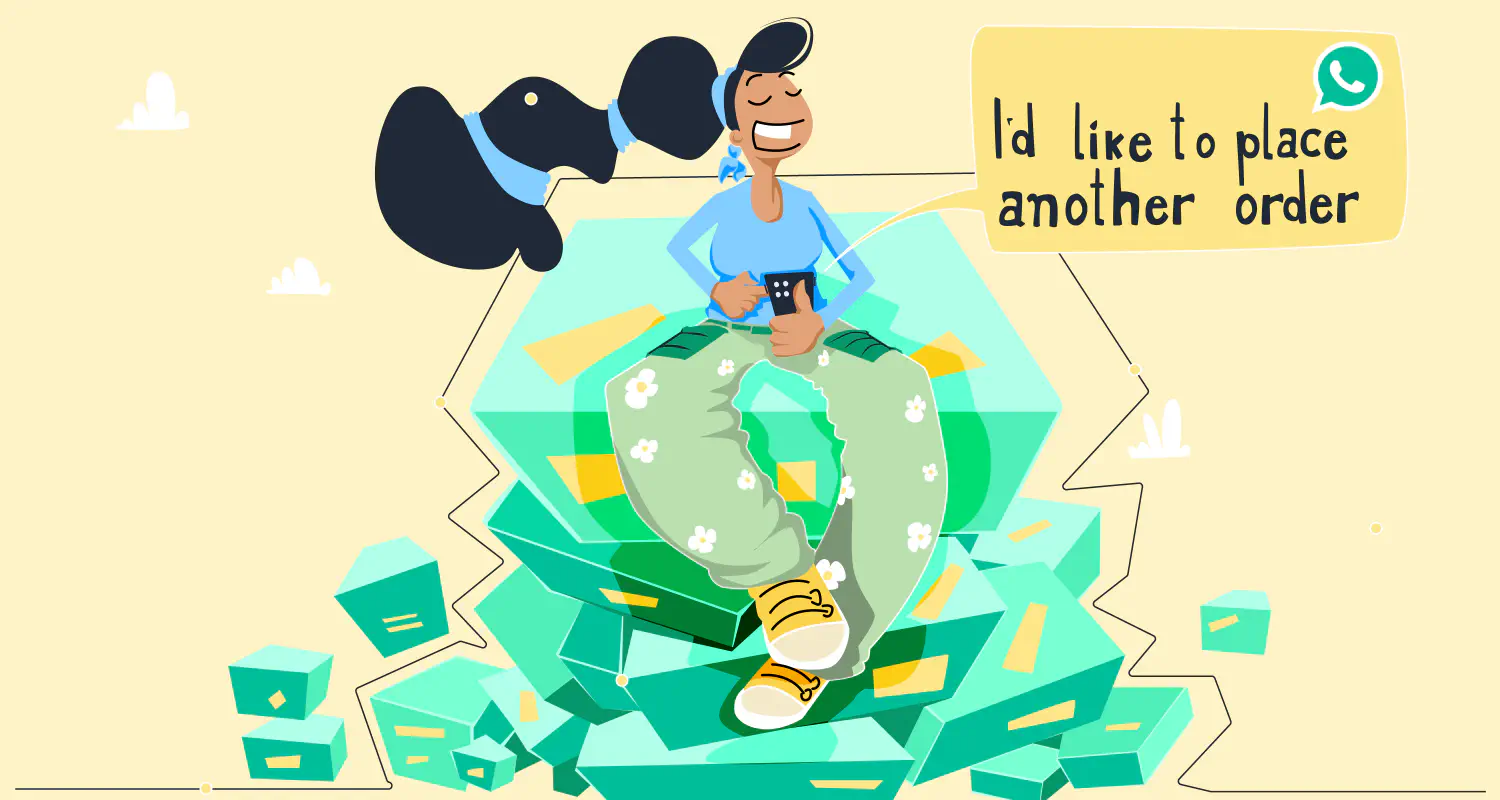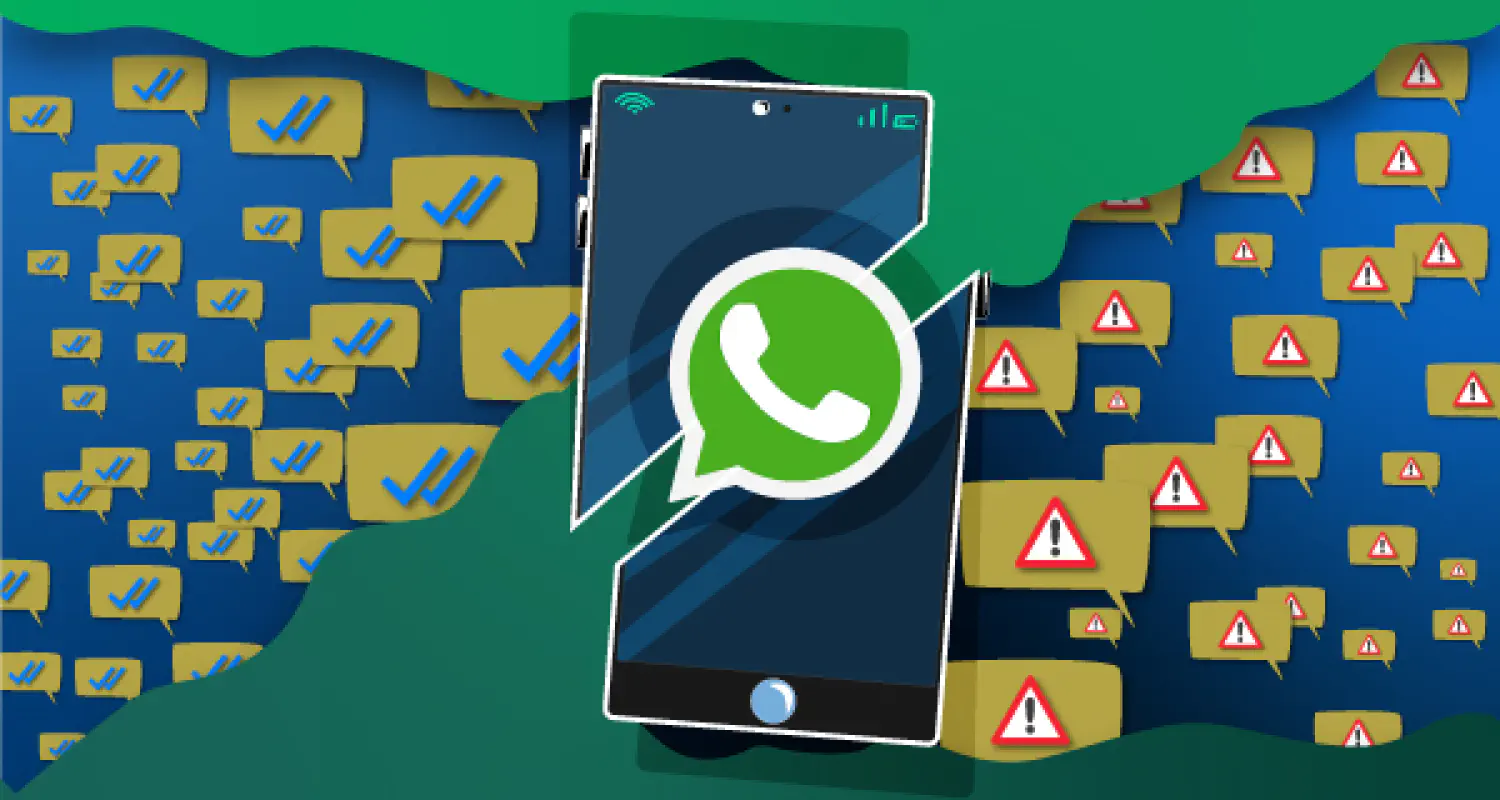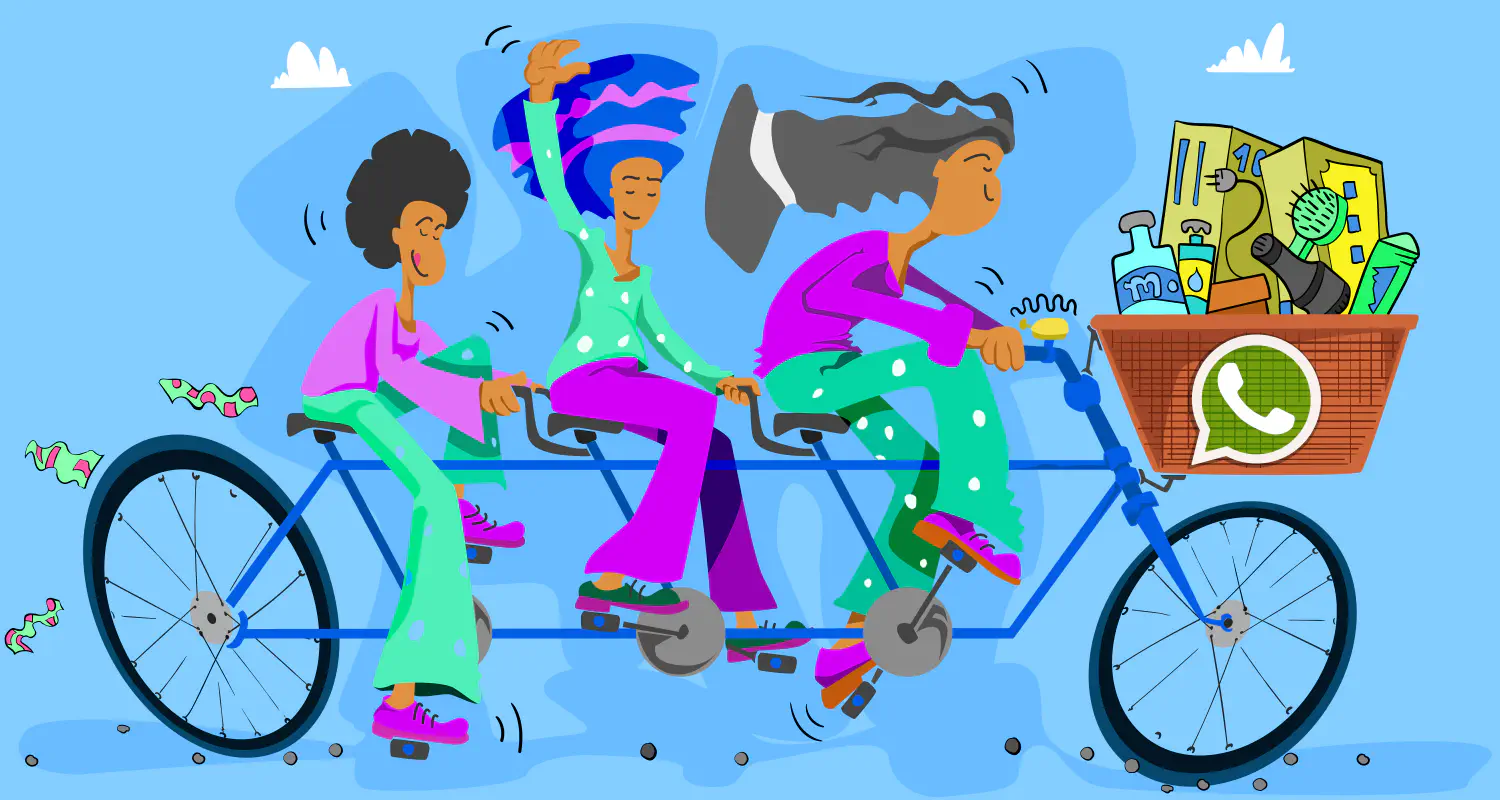5 Strategies to Boost Post-Purchase Engagement on WhatsApp

A customer’s journey doesn’t end when they buy. That’s what a lot of businesses think, and they go silent after a sale happens, but it’s costing them. Right after a purchase, you have a chance to build loyalty, drive repeat sales, and turn your buyers into advocates.
The time after a purchase is when buyers are most attentive, most emotionally invested, and most open to hearing from you. Ignoring them at this stage means missing a key opportunity to stand out and stay top-of-mind.
Luckily, you don’t need a massive post-sale operation to get it right. You can do it with WhatsApp, a channel your customers already know and trust.
In this article, we’ll show you how to increase post-purchase engagement with WhatsApp and whether the WhatsApp Business App can help you do it.
Why post-purchase engagement is important
Post-purchase engagement is important because it turns one-time buyers into loyal customers, and it’s the best chance you get to build trust with your customers.
Here’s why the first days or weeks after a sale are crucial for retention, loyalty, and long-term revenue:
- Customer attention is highest right after purchase: They’re more likely to open messages, respond, and engage, making it the perfect time to strengthen the relationship.
- Engagement drops fast if you go quiet: Studies show that brands lose relevance quickly without follow-up, leading to lower retention and higher churn.
- Referrals rarely happen without nurturing: Happy customers don’t always spread the word unless you stay top-of-mind and prompt them to share.
- Support moments build trust: A simple check-in or how-to message can prevent confusion, reduce returns, and build loyalty.
- Most businesses underutilize this window: Teams focus heavily on acquisition and ignore post-purchase conversations, leaving revenue and loyalty on the table.
Key moments to engage customers
The best moments to engage customers are right after they buy, as they start using your product, and it’s the time when they’re most likely to convert again.
Here’s a list of all the perfect moments you can use for engaging customers:
- Right after the purchase confirmation: Follow up with a friendly thank-you, order summary, or delivery update. This reassures the customer and starts the relationship on a positive note.
- After onboarding, or when setup is incomplete: A quick message to check progress or guide them through a missed step can prevent frustration and reduce churn.
- When customers hit a milestone or ask for help: Celebrate small wins (like a first successful use) or offer real-time support when they reach out. These are trust-building moments.
- Ahead of a renewal, upsell, or referral opportunity: Don’t wait until the last minute. Re-engage early with helpful value-based messages that naturally lead into your offer or request.
5 strategies to build post-purchase relationships on WhatsApp
The best way to build post-purchase relationships on WhatsApp is to stay helpful and relevant without overwhelming your customer.
Here’s how to build a post-purchase relationship with your customers:
1. Send a warm, human follow-up
Instead of a robotic “Thanks for your order,” send a message that feels like it came from a real person on your team. A simple check-in with personalized elements goes a long way.
To save time while keeping a personal touch, use Quick Replies. They’re pre-saved responses you can reuse inside the WhatsApp Business App. They’re great for answering common questions, confirming orders, or sending onboarding tips without having to retype everything.
You can personalize them quickly by adding the customer’s name or tweaking the message based on context.
2. Deliver helpful onboarding content
Once someone buys from you, the last thing they want is to feel lost or on their own. A smooth onboarding experience builds confidence, reduces returns or churn, and increases the chances they’ll come back for more.
WhatsApp is perfect for this because it’s personal and flexible. You can share quick how-to videos, short checklists, voice notes, or even a friendly PDF guide, whatever helps your customer get started the right way.
On top of that, you can time your messages based on where the customer is in their journey, and always aim to answer the question before they even have to ask.
3. Recommend the next best product or feature
Once customers are engaged, it’s a great time to suggest relevant add-ons, upgrades, or complementary features. However, the key to success here is to frame it around their goals, not your sales targets.
You shouldn’t be overly salesy, as this can drive customers away or make them feel like they’re being pressured.
Instead of blasting your entire product list, use the WhatsApp product catalog to send curated messages. It’s a built-in WhatsApp feature that lets you create an organized list of your products or services, complete with images, descriptions, and prices.
4. Check in to offer support
Checking in with your new customers to offer support means sending a quick, friendly message to see how things are going after the purchase. It’s not a sales push or a generic update, so it needs to be as human and helpful as possible.
For instance, proactive messages like “Need help getting started?” or “Anything unclear so far?” can reduce frustration and show that you care.
You can use one of WhatsApp Business’ features, contact labels (e.g., “New Customer – Week 1”) to track where customers are in their journey, so you can time your check-ins when they’re most needed.
5. Use broadcasts thoughtfully
WhatsApp broadcasts let you send the same message to many customers at once, without starting a group chat. It lands in each person’s inbox like a regular 1:1 message, but here’s the catch, only people who’ve opted in and saved your number will receive it.
You can use broadcasts to scale your post-purchase communication, but you need to use them thoughtfully so that they don’t feel like spam. You should focus on both value and timing. Try to share helpful tips, announce new features, and offer deals.
Avoid sending too many broadcasts or pushing overly promotional content. If every message feels like an ad, customers will tune out fast.
Best practices to keep in mind
Here are a few tips to help you get the most out of post-purchase engagement on WhatsApp:
- Personalize where possible: Use the customer’s name, purchase details, or past behavior to make messages feel thoughtful, not automated.
- Keep it short and friendly: WhatsApp is a casual channel. Stick to clear, concise messages that sound human.
- Prioritize relevance and timing: Don’t send messages just because you can. Make sure they match where the customer is in their journey.
- Never message without opt-in or permission: Only contact users who have given clear messaging opt-ins. Messaging without permission can damage trust and violate WhatsApp business messaging policies.
- Always offer value, not just information: Every message should help the customer succeed, feel supported, or discover something useful, not just deliver an update.
Message template examples for post-purchase retention on WhatsApp
Here are 5 WhatsApp message templates you can use to strengthen post-purchase relationships with your customers.
1. Welcome message
Hi [First Name]! 👋 Thanks again for your order. We’re excited to have you on board. If you need anything, just reply to this message. We’re here to help!
2. Tip or quick-start checklist
“Hey [First Name], just checking in! Here’s a quick setup checklist to help you get started:
- [Step 1]
- [Step 2]
- [Step 3]
Let us know if you get stuck, we’re just a message away!”
3. Upsell or cross-sell suggestion
“Now that you’re using [Product A], many customers also grab [Product B] to get even better results. Want me to send you a quick overview?”
4. Proactive support check-in
“Hi [First Name], just wanted to check how’s everything going with [Product/Service]? Any questions so far? Happy to help if anything’s unclear.”
5. Referral or feedback request
“Glad to see you’re up and running, [First Name]! If you’re enjoying [Product], would you be open to sharing your thoughts or referring a friend? Here’s a quick link: [Link]”
What you can’t do with the WhatsApp Business App
If you’re finding it hard to keep up with post-purchase follow-ups, customer check-ins, or order-related messages, you’re not alone. The truth is, the WhatsApp Business App wasn’t built for high-volume, team-based, or automated communication.
Here’s what the App can’t do (and why it starts to feel limiting as you grow)
No automation or triggered messages
You can’t automatically send a message when a customer completes a purchase, misses a setup step, or is due for a renewal. Every message has to be sent manually, which quickly becomes unmanageable.
No CRM sync
You can’t track where a customer is in their journey, see their history, or integrate WhatsApp conversations with your existing tools. This makes follow-ups messy and inconsistent.
No analytics or reporting
There’s no way to measure how your messages are performing. No open rates, response rates, or insights to optimize your post-purchase strategy.
No shared inbox or team collaboration
Only one person can manage the conversation flow at a time. If you’re working with a sales or support team, messages can get lost, duplicated, or delayed.
The next step: WhatsApp Business API
The WhatsApp Business Platform is built for growing businesses that want to engage customers at scale, collaborate as a team, and automate key touchpoints. It allows you to:
- Set up triggered post-purchase messages
- Sync WhatsApp with your CRM or help desk
- Use a shared inbox across your team
- Track performance with real analytics
If you’re serious about post-purchase engagement, the API gives you the tools to make it consistent, scalable, and personal, all at once.
Conclusion
Post-purchase engagement is your chance to build real customer loyalty, reduce churn, and create brand advocates. WhatsApp gives you the perfect channel to make that happen: it’s personal, direct, and already where your customers are.
Even with the WhatsApp Business App, you can make a strong impact by following up thoughtfully and adding value at the right moments.
But when you’re ready to scale, using WhatsApp Business Platform with a shared inbox like Rasayel can help you automate the routine, personalize at scale, and keep your team aligned in one shared inbox.

Hania is a seasoned researcher and content writer specializing in WhatsApp Business and its role in B2B sales and customer engagement. With years of experience creating in-depth, thought-provoking content, she combines real-life use cases and deep industry insights to help businesses leverage WhatsApp as a growth tool. Her expertise lies in translating complex research into actionable strategies, making her a trusted resource for companies looking to innovate their communication and sales processes.





